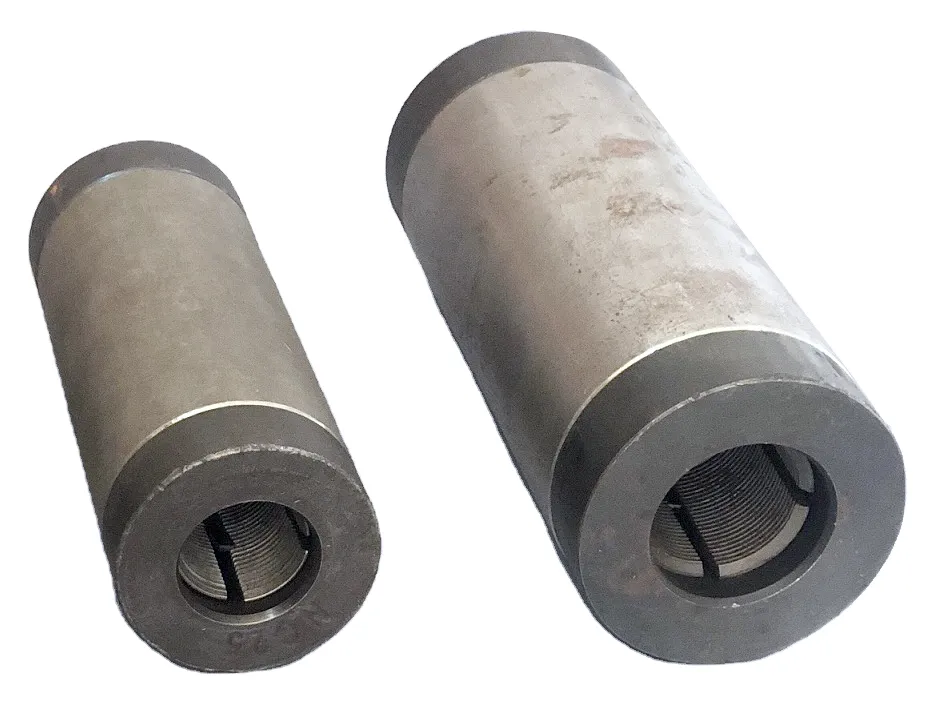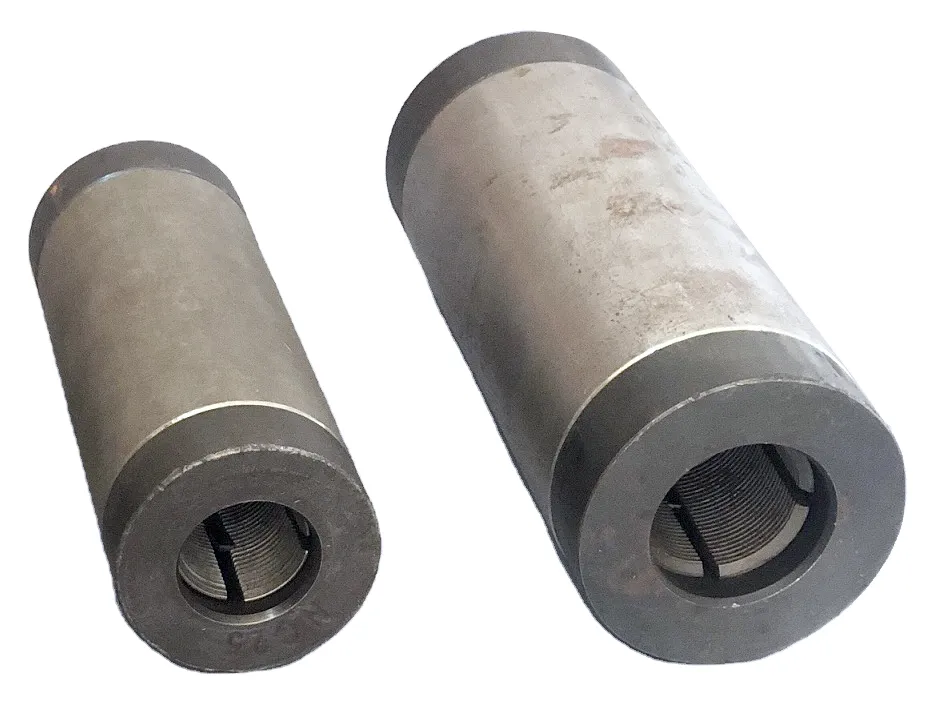Products Description
Introduction
The snap-in sleeve is mainly composed of the sleeve body, locking components (such as springs, clips or snap rings), and sealing structures. Its core design lies in automatically locking after axially inserting the reinforcing bar, achieving reliable connection through mechanical interlocking or elastic deformation. For example, the double self-locking reinforcing bar snap-in joint device uses conical clips and a spring structure. After the reinforcing bar is inserted, the clips are tightened by the spring force, forming a double locking. Some sleeves also adopt a metal snap ring design, expanding through narrow slots and openings, and locking in the trough of the corrugated pipe to ensure a stable connection.
This type of sleeve is usually made of 45-grade high-quality carbon structural steel or stainless steel, and undergoes precise processing and surface treatment, possessing high tensile strength and corrosion resistance.
Primary purpose
1. Building structure connection
* Suitable for the connection of beams, columns and slabs in scenarios such as high-rise buildings, bridges, subways, nuclear power plants, etc., especially for on-site assembly of prefabricated components.
* In the connection of steel reinforced concrete columns and frame beams, it solves the problem of inability of the steel bars to rotate, avoiding welding quality risks and inspection costs.
2. Adaptability to complex environments
* Can work stably within the extreme temperature range of **-20℃ to 50℃**, with a dustproof and waterproof rating of IP54, suitable for outdoor or high-humidity environments.
* In scenarios with frequent vibrations such as high-speed rail bridges and marine engineering, the dual self-locking structure can withstand 2 million cycles of load without failure.
3. Special working conditions requirements
* Suitable for the connection in space-constrained areas such as steel cages and closed ring-shaped steel bars, without the need for additional operational space.
* Supports mixed positive and reverse thread connections, flexibly responding to the requirements of misalignment or turning.




